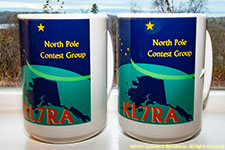

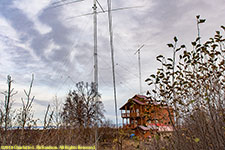
We always enjoyed talking to Rich Strand, KL7RA, at Dayton, and were saddened to hear of his passing in November, 2015. However, thanks to the efforts of the North Pole Contest Group, his legacy continues.







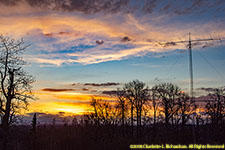


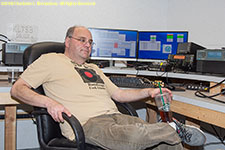


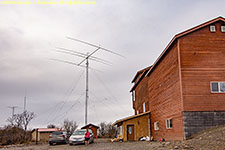










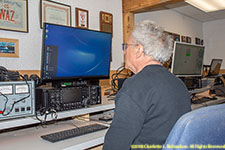






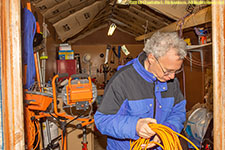
Quite a bit of work needed to be done to get ready for the contest.
We replaced three bad coax connectors for the fixed JA 20m antenna.






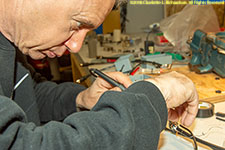








160m: Full-sized vertical built of Rohn 25 with a whisker on top and ground radials. Used for transmit only.
80m: Half-wave wire 4-square, 130' tall
40m: (North tower) 4 element M2 at 95', half-wave wire 4-square (currently not in use), (South tower) 2 stacked 2-element shorty-fortys at 55' and 110'. The two towers are three wavelengths apart N-S and can be tuned to be driven in phase 20m: North
20: 5 over 5 M2 at 55' and 110', East 20: 5 over 5 M2 at 45' and 90', fixed 5-element homebrew on JA at 45'
15m: 5 over 5 Cushcraft at 35' and 70', 4 over 4 over 4 Cushcraft at 33', 66', and 99'.
10m: 5 over 5 over 5 Cushcraft at 30', 60', and 120'
Beverages: N, NE. E. and W 660'. No need for receiving antennas for JA, KH6, or ZL. Used on 160m and can be used on 80m.
For CQ WW SSB 2018, the operators were:
AL2F, Kris Kerce
KL7SB, Steve Bloom
KQ1F, Charlotte Richardson
K1XM, Paul Young
KA1NCN, Dave Case
KL0R, Wigi Tozzi
KL2HD, Jeff Williams
After contest, the four blown amplifiers needed to be repaired
and one lower 20m antenna needed to be straightened out.
We returned in 2019 for the CQ WW SSB contest.
This time not all that much antenna or tower work needed to be done. Steve and Wigi wanted to swap out several working-but-old Tailtwister antenna rotors for Yaesu rotors, which necessitated rewiring the Green Heron rotor control boxes. Tree, N6TR, did the tower work, and he and Paul rewired the controllers.
There were nine operators for the contest: KQ1F (Charlotte Richardson), KA1NCN (Dave Case), K1XM (Paul Young), KL7SB (Steve Bloom), KL0R (Wigi Tozzi), N6TR ("Tree" Tyree), KL7TC (Bill Hunstein), KT0W (Nick Hauser), and N5ZO (Marko Myllymaki). Before the contest, Wigi had us test for inter-station interference and any other issues we might have. We were well-staffed and well-prepared.
However, a coronal hole caused truly awful conditions for anyone operating from a high-latitude location like ours. The resulting aurora, when we had clear skies, was a beutiful bright green arc across the entire northern horizon, so bright that it was still visible well into twilight. At least Paul was finalluy able to photograph an aurora, though that was small consolation at the time.
We had six operators in the station at all times and were calling CQ on several bands continuously, but there were many hours when none of us worked anything. Stations at lower latitudes had better conditions, but of course missed a lot of high-latitude multipliers like us.
Our final score was only 1/8 of what we achieved in 2018, a real slog.
©2018, 2019 Mermaid Underwater Photographic. All Rights Reserved.
Contact us at mermaid@underwater.org.
Last modified 7 November 2019